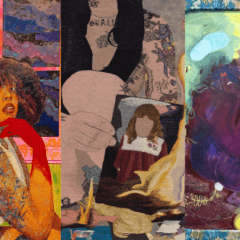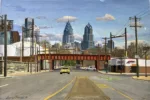[Evan views a group exhibition rooted in photography through the lens of photographic technique and process, finding connections between seemingly unrelated works. — the Artblog editors]
Room for the Whole Wide World is an exercise in material and visual abstraction that uses photographic imagery and practice as its base, meandering between the flatness of an image and the dynamism of the world it represents. As I wandered the room at Vox Populi, I found it helpful to consider some of the basic and traditional elements of the photographic image and process–frame, line, texture, light, latency, exposure, and development, or less limiting, of loss and the space in-between. Creating a mental foundation for viewing this abstraction was essential.
The multimedia exhibition, curated by Jay Muhlin, features works by Elisa Gabor, Sanaz Mazinani, Anna Neighbor, Sarah Palmer, and Elisabeth Tonnard. Nestled in a single room in the heart of Vox Populi’s space, the title of the show is curious as well. Room for the Whole Wide World implies an open and inclusive intention–in line with the idea of this group of individuals sharing one collaborative space.
Subtleties of light and form
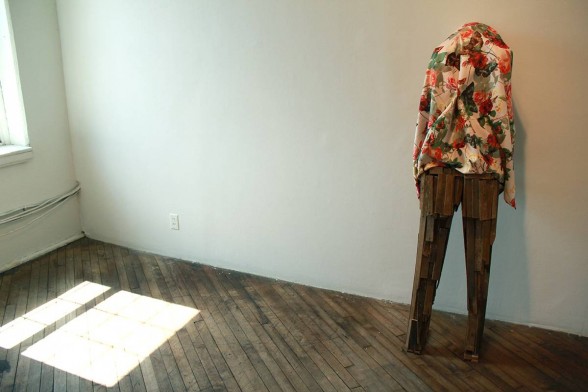
The space is noticeably sparse–I at first struggled with this and wondered whether the curator had taken enough care to thoroughly carry out his vision. With time, my impression changed as I began to think about the gallery not as a floor and a few walls, but as a plane, much like film. A photograph–a good one–must be remarkable for its subtlety regardless of its density, just as a successful exhibition must achieve its whole vision in as many or few individual parts as necessary, and no more or fewer.
The pieces in this show act as formal elements within a photograph–like texture (the soft and harsh contrast of textures in Anna Neighbor’s above piece), line (Anna Neighbor’s “An Attempt (#2)”), or frame (Sarah Palmer’s monochromatic prints). One of the most successful elements of the show was not a piece per se, but the decision (was it?) to allow light to come through the window and expose its likeness onto the floor, perfectly contained to a rectangular, glowing box of light, with the wooden separators between panes forming a grid pattern in line with the “rule of thirds” etched in the brain of every beginning photo student. This irony did not escape me.
The projection no doubt changes with the time of day, so each viewer experiences a different iteration. This begs the comparison of Cartier-Bresson and his “decisive moment,” or whether there is a singular, precise moment in time at which point it is perfect to capture an image. Is the projection most beautiful at a certain time of day, or is its beauty to be found in its relativity and fleeting existence?
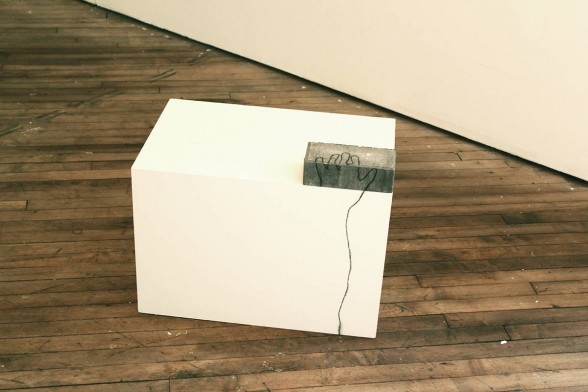
Anna Neighbor’s “An Attempt (#2)” is an exercise in lightness, space, and loss made with heavy and dense materials. The white box is the void–all the spaces in between–and perched on top of it is that singular brick of grey, the substance.
We see this thin, snaking charcoal line as a hand clinging to substance though the void and understand it as such by association, empathizing with the absent and invisible body that we imagine it belongs to. Much like the experience of viewing a photograph, it is easy to forget that no matter how much the image we see reminds us of, or resembles something we know, it is a shell, a signifier. The reality is fleeting and past–we are left with the remains, held in charcoal or on film.
Micro and macro approaches
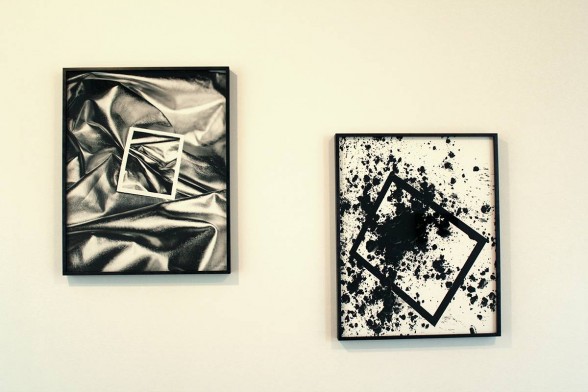
Sarah Palmer exhibits the only two “traditional” photographic prints in the exhibition, addressing the oft-debated idea that the photograph is intrinsically an abstraction of reality. By photographing objects that are highly textural, and placing both white and black frames over them in her images within the black wooden frames that hold the prints, Palmer establishes a kind of internal conversation between the works that asks us to account for what lies outside of the imagery–suggesting that this conversation is not cut off by those black wooden frames and their futility.
Her approach to this kind of micro-textural still-life is reminiscent of Irving Penn’s still-life pictures, compositions in which he examines small, wasted, and discarded objects such as cigarette butts and boxes at proximities that obscure their previous uses and make light of the inherent beauty of their degradation.
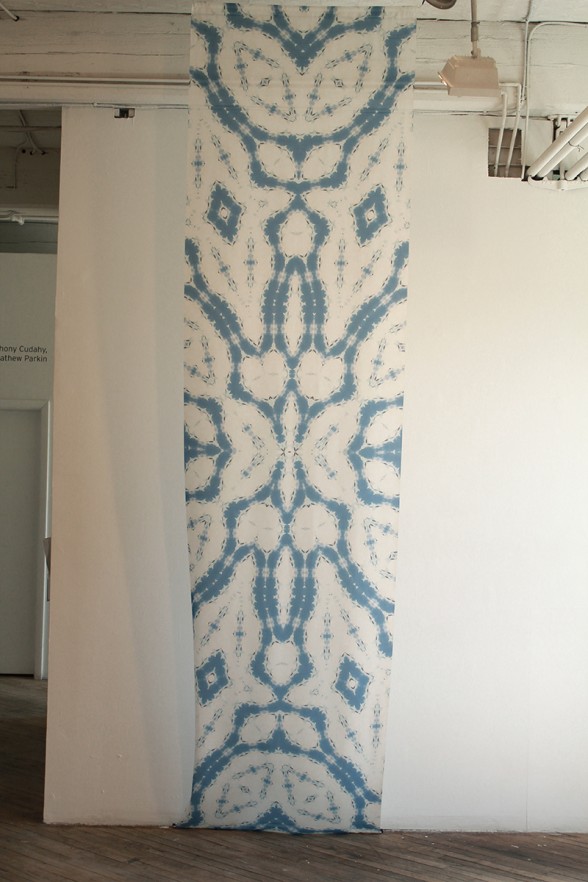
Sanaz Mazinani’s “Gripen in Flight” hangs monumentally and authoritatively on the far wall of the space. Resembling a cyanotype, but in fact a digital print on silk, the hanging shows what seems to be a highly magnified image of cell structure or organic material, similar to Anna Atkins’ archival cyanotypes of plant life in the 19th century. A fusion of organic imagery and synthetic process, “Gripen in Flight” is a nicely wrapped example of the blurred lines between times and techniques in this exhibition.
See Room for the Whole Wide World with an open mind and receptive eyes–its charms may not initially woo, but will unfold and connect with reflection and time. This is a promising exhibition in relation to the sometimes stagnant norms of talking about photography, and is certainly not to be missed.
Room for the Whole Wide World is on view at Vox Populi, September 5 – 28. Gallery hours are Wed-Sun, 11 am – 6 pm.
Evan Paul Laudenslager is an active artist and writer currently living in Philadelphia. He is a recent graduate of Tyler School of Art.




